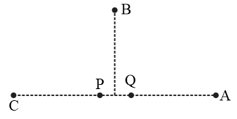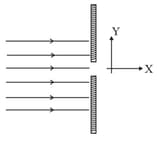EASY
Earn 100
To observe diffraction, we need only a single slit, but for interference, we need two slits.
(a)True
(b)False
100% studentsanswered this correctly
Important Questions on Wave Optics
EASY
EASY
EASY
EASY
EASY
EASY
HARD
EASY
MEDIUM
In the figure below, and are two equally intense coherent sources emitting radiation of wavelength The separation between and is and the phase of is ahead of that of by and C are three distinct point of observation, each equidistant from the midpoint of PQ. The intensities of radiation at will be in the ratio :

MEDIUM
MEDIUM
EASY
EASY

MEDIUM
MEDIUM
EASY
replaced by red light, then the diffraction bands _______.
EASY
MEDIUM
EASY

